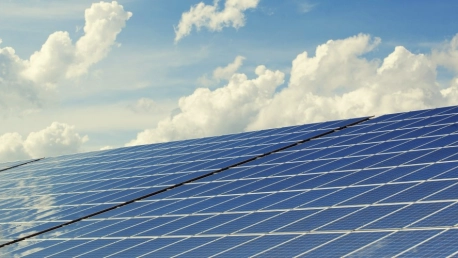Everyone knows by now that climate change is one of the biggest threats to the planet. And as a result, the need for sustainable solutions has become the number one priority to conserve what’s left of the earth and ensure the coming generations actually have a future. As the world gets hotter and wild weather hits us harder and more often, people everywhere are shouting out for something to be done, and fast. There’s a shining light in the middle of all this: green technology. It’s our big hope, bringing smart new ways to tackle these tough problems.
Green tech refers to various practices and even technologies designed to lead the charge against climate change. It’s kind of like an arsenal with the sole purpose of restoring Earth to its original glory in the long run. However, this field isn’t just about creating products that are energy efficient, but also changing the way the world works and how we interact with our surroundings.
Renewable Energy
Talking about renewable energy is like chatting about the star of green tech. It’s where the cool stuff happens: taking what the earth gives us for free and turning it into the energy we use every day.
Solar Innovations
Think solar panels are just those blue things on roofs? There’s so much more going on in the solar world. Now, there are super-efficient panels that grab more sunshine than ever, and even see-through solar cells are making waves. Solar power has also started popping up in all kinds of new places, like roads and backpacks.
Wind Energy Breakthroughs
Even though wind turbines aren’t new, they’re getting a serious facelift. Engineers have been developing blades that grab more wind but make less noise, and wind farms in the ocean are the new big thing. The turbines out at sea can catch more wind and aren’t an eyesore.
Hydro and Geothermal
Hydroelectric power is getting smarter with technologies that minimize environmental impact and maximize efficiency. And let’s not forget about geothermal energy – tapping into the Earth’s own heat to generate power. It’s almost like using the planet’s heartbeat to keep the lights on.
Sustainable Materials and Green Manufacturing
Moving to more energy-efficient electricity sources won’t be enough to update and sustainably modernize the industrial sector. We need to accept that producing eco-friendly products relies on us developing new ways of employing sustainable resources.
Earth-friendly materials
One of the biggest developments in the production of eco-friendly products is the use of bioplastics, which come from renewable sources like cornstarch, vegetable fats, and oils. Bioplastics have a lower carbon footprint and are frequently biodegradable, which means they can be broken down into ingredients that can be used to produce new goods. Green manufacturing also refers to making products that leave a much smaller dent on the planet than usual. How do we do this? Well, companies are starting to adopt a little thing called the cradle-to-cradle design, which basically means creating products that can later be recycled or reused for other purposes.
Using smart manufacturing techniques also plays a role in enhancing sustainability. By leveraging these techniques along with the power of the Internet of Things (IoT) and AI, we can reduce how much energy we consume and optimize production processes. For example, predictive maintenance algorithms can identify equipment malfunctions before they even happen, which in turn reduces downtime and safeguards resources.
Green chemistry has also caused a positive disruption in how things are made these days. By cutting down on all the harmful stuff when using chemical products, you can change the game and chart an entirely new course that’s eco-friendly yet profitable. But how, you may ask? Well, for starters, we could try coming up with solvents that aren’t toxic and creating chemical reactions that don’t leave yucky leftovers.
Energy Efficiency and Smarter Consumption
Now, let’s chat about something we all deal with daily – energy consumption. It’s not just about how much energy we use, but how smartly we use it. Energy efficiency is like the silent hero in the green tech world. It’s about doing more with less, and boy, are there some exciting developments in this space!
Smart Grids and IoT
Imagine a world where your home knows exactly how much energy you need and when you need it. That’s what smart grids are all about. They’re like the brain of the energy world, using real-time data to distribute electricity efficiently. And when we bring on the Internet of Things (IoT), things get even more interesting. Imagine your appliances talking to each other and the grid to optimize energy use. Your fridge could know the best time to cool down, and your heater could turn off when you’re not home – all automatically.
Green Buildings and Architecture
Buildings are a huge part of our energy consumption puzzle. Green building design is all about creating spaces that are beautiful, functional, and energy-efficient. For starters, the big guys are building using materials that naturally keep the interior cool during the summer and warm during the winter. Also, they’re designing windows that get the most out of sunlight and even roofs that can generate their own power.
The Shift to Eco-friendly Mobility
Transportation is at a really important crossroads right now because of the big push to use green technology. There’s a vast need to cut down on carbon emissions, and the whole world is looking for ways to get around that are better for the planet. Let’s jump into the cool tech developments that are totally changing how we think about getting from A to B.
Electric Vehicles (EVs)
The way EVs have evolved is mind-blowing if you’re looking at advancements in battery technology and energy efficiency. Modern EV batteries, such as Lithium-Ion, are not only becoming more energy-dense but also more cost-effective. This addresses range anxiety and affordability concerns, while solid-state batteries are also on the horizon. They promise even greater energy densities and faster charging times. Unlike internal combustion engines, with efficiency rates of about 20-30%, electric motors can achieve efficiency rates as high as 90%. This dramatic increase in efficiency is pivotal in reducing energy consumption and operational costs.
Public Transport Innovations
Within public transportation, technological advancements are making mass transit systems more ecologically friendly and efficient. Reliance on fossil fuels is decreasing with the use of electric and hydrogen fuel cell technology in buses and trains. Furthermore, routes and timetables are being optimized by intelligent transportation systems using IoT and AI, which are lowering emissions and traffic.
The Bottom Line
It’s clear that we’re taking some serious steps toward a greener future, like harnessing power from the sun and wind and reusing materials. That said, the truth is that society is moving in a direction where energy efficiency is a usual way of life, and even transportation has changed so we can tread more lightly on the planet.
But what could’ve brought this new way of living along? It might be that enough people have gotten tired of seeing Mother Nature waste away for our benefit, especially since she’s been so generous these past few thousand years. What makes the initiative all the more beautiful, though, is how all these different methods come together in a way to feed each other, like cogs in a machine, forming an overarching way of life that’s advantageous yet sustainable.
While some may feel like the journey is a bit unrealistic, and that one person’s tiny difference couldn’t make any notable difference, the truth is that a collective effort makes for a ginormous transformation. Hopefully, this will serve as a call for action from everyone, like policymakers, industry leaders, and every individual out there. By embracing these technologies and advocating for their adoption, we can all be architects of a sustainable future.









